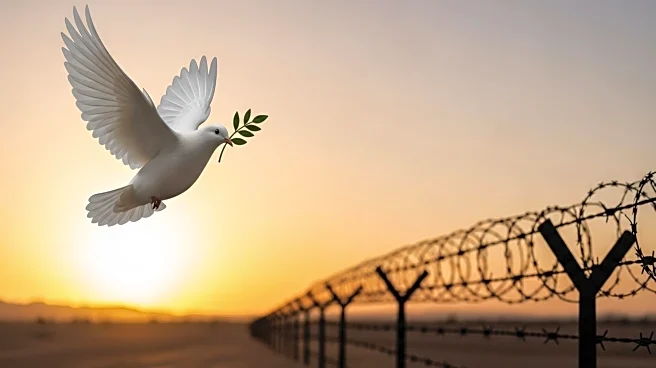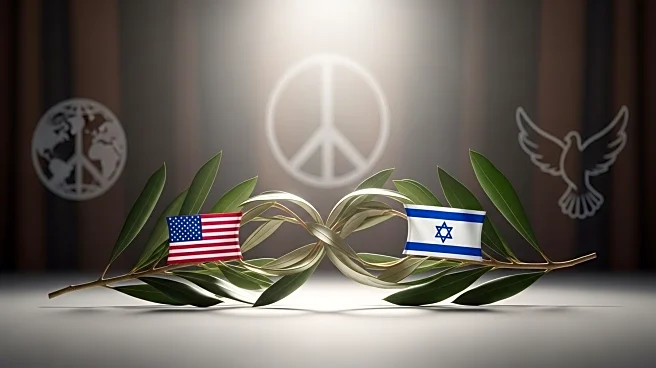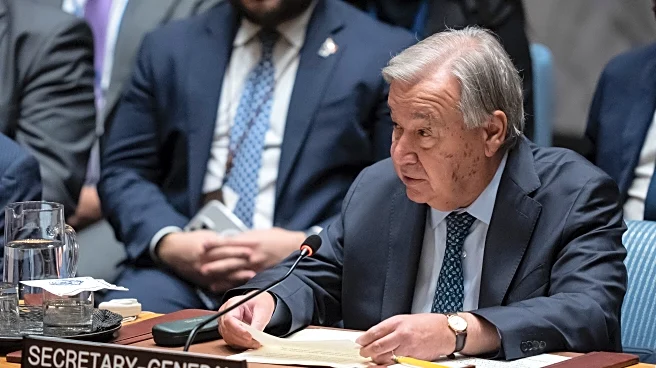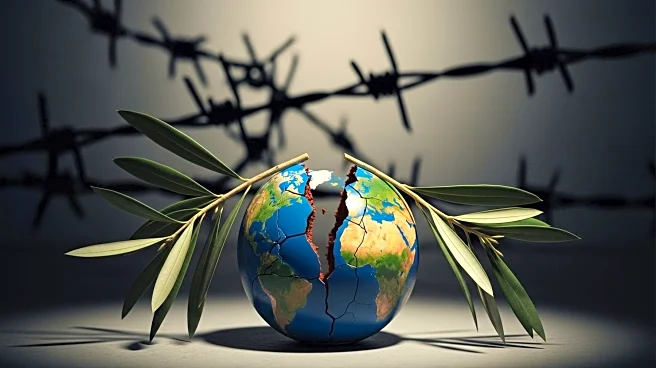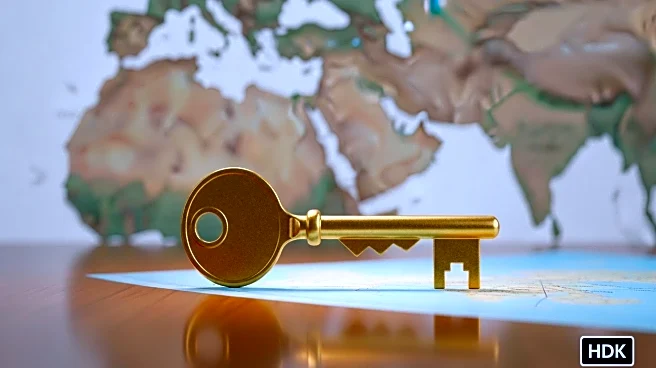What's Happening?
President Trump has announced a cease-fire plan between Israel and Hamas, marking a potential end to the longest and deadliest war in the Israeli-Palestinian conflict. The plan includes the exchange of hostages abducted from Israel for Palestinian prisoners, the withdrawal of Israeli troops, and the entry of humanitarian aid into Gaza. This breakthrough comes two years after a Hamas terror attack on Israel that escalated the conflict. The announcement has sparked intense emotions among Israelis and Palestinians, with families of hostages expressing relief and Gazans feeling a mix of joy and sorrow for the losses endured during the war.
Why It's Important?
The cease-fire plan represents a significant step towards peace in a region plagued by decades of conflict. If successful, it could lead to improved relations between Israel and Palestine, potentially paving the way for further diplomatic efforts and stability in the Middle East. The release of hostages and prisoners could alleviate humanitarian concerns and foster goodwill between the parties involved. However, the plan's success depends on the cooperation of both sides and the implementation of its terms, which could face challenges given the historical tensions and mistrust.
What's Next?
The release of hostages and prisoners is expected to begin soon, with President Trump potentially traveling to the region to oversee the process. The international community will be closely monitoring the situation, with hopes that the cease-fire will hold and lead to lasting peace. Political leaders and organizations may engage in further negotiations to address unresolved issues and ensure the stability of the cease-fire. The plan's progress could influence future diplomatic efforts in the region and shape U.S. foreign policy in the Middle East.
Beyond the Headlines
The cease-fire plan highlights the complex dynamics of the Israeli-Palestinian conflict and the challenges of achieving peace in a region with deep-rooted historical grievances. It underscores the role of international diplomacy and leadership in conflict resolution and the potential for humanitarian efforts to bridge divides. The plan's success could inspire similar initiatives in other conflict zones, emphasizing the importance of dialogue and compromise.


